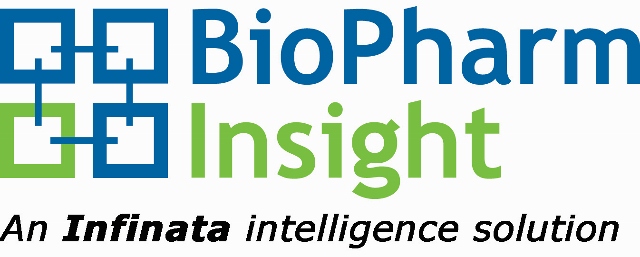- Next-generation sequencing could help find answers behind misunderstood pediatric diseases
- Results are now available within a day or two
- Costs of genomic sequencing have dropped dramatically
Illumina (NASDAQ:ILMN) and Qiagen (NYSE:QGEN) are now focusing their next-generation sequencing devices for clinical use, instead of just the research setting, according to industry executives.
Illumina is the market leader in genomic sequencing, and the company’s technology took a particular course in the last two years, said Illumina’s vice president & chief scientist, David Bentley. The company started to evaluate how its genomic devices can address clinical needs at low costs, he said. Previously, the company was just operating in the research arena, he noted.
MiSiq, Illumina’s flagship fully integrated sequencer, can produce a genome sequence in a day, which is now at the speed and precision of many other medical tests a doctor might order, said Bentley. Doctors need answers quickly as they need to prescribe the right drug quickly, and need the answer within a couple of days, he noted.
The second thing is making sense of this information – understanding what the data means, said Bentley. This requires analytical tools and software, to take the genome sequence and convert it into an accurate picture of the genome. Building out extensive clinical, bioinformatics expertise was a substantial shift from Ilumina’s standpoint, he said.
Qiagen is also focusing on enabling its devices to be utilized for clinical use and not just for the research setting, said Tadd Lazarus, chief medical officer, Diagnostics unit. Currently in development is the QIASymphony/Genereader platform. The company has specifically kept in mind the ease of workflow to provide efficient next-generation (NGS) solutions that are focused on clinical use, he said. For example, the GeneReader will be able to run 20 patient tissue samples in parallel, a feature which greatly enhances the ease of use.
Qiagen has also invested to streamline the data management of NGS, which is a well-known bottleneck to NGS adoption in the setting of clinical research and diagnostics, he noted. The company’s goal is to make data clinically relevant through quality of results and compatibility, Lazarus said.
Genomic sequencing now only takes a one or two days to get results, Bentley said.
Future implications
The industry will move towards the development of FDA-approved kits for certain tests, such as drug response or tests that answer precise questions for physicians, said Bentley. “But the genome as a whole to capture data in a regulated and standardized way should [still] be done by qualified scientific labs,” he added.
Individual whole genomes will be brought into medical practice, and one of the early wins will be in cancer, said Bentley. NGS is not going to cure cancer, but it will help a number of patient cases be better understood and treated, he explained. Healthcare providers will start saving money, and more often than not, the right drug will be given, he said.
The other early win will be in pediatric indications, where we’ve already seen some breakthroughs, said Bentley. “When you have no idea what’s wrong, and a disease is causing a great deal of suffering, you can sequence genomes and get results in 24-48 hours,” he said. Even better is moving to a more routine screening process, he added. Many of the pediatric diseases are metabolic disorders, which are detectable at the DNA level, he explained. If detected early enough, the hope is it can be completely corrected, which is a tremendous opportunity for the future, Bentley said.
One organization in this field is the Translational Genomics Research Institute (TGen) and its Center for Rare Childhood Disorders, a Phoenix-based non-profit research center that is using sequencing technology to study rare genetic pediatric disorders. Dr Jeffrey Trent, president and research director of TGen, highlighted a case of a now 13-year-old girl named Shelby Valint, where the medical community was baffled by the roots of her illness, and where genomic sequencing helped find an answer.
Shelby’s genome was sequenced, and with the help of Dr Vinodh Narayanan, her neurologist at the Barrow Neurological Institute, Phoenix Arizona, the collaborative work at TGen helped identify a genetic cause behind her inability to synthesize dopamine. After receiving medication that allowed for direct activation of dopamine receptors and pathways, the patient was able to walk, run, communicate with others and participate in school.
[AZBio – The TGen videos sharing Shelby’s story can be found at the bottom of this page.]
Healthcare data storage
One challenge that has been universal to technology developers is how to make a genome sequence accessible, cheap and quick to produce, said Bentley.
The industry is systematically starting to catalogue and record genomes, which requires two things – the genome sequence itself and technology to allow the decoding of the individual blueprint.
The systematic aggregation of information is the greater challenge, as individual health records are considered to be private, which they should be, said Bentley. At the same time, the research community needs to gain access to this data, to draw conclusions, he said. It is entirely possible to organize this information, because of advances in computer technology, such as cloud computing, he said. “It’s a roadblock today, but I think it’s possible over a period of time, to quite quickly remove any ethical roadblocks and make it socially acceptable to share medical information in an appropriate way,” Bentley said.
This genetic information can then be fed back to the doctor in a useful way, he said. “It’s a distillation of high value information to direct a clinician [for treatment decisions] one way or another,” he said.
by Kimberly Ha in New York for BioPharm Insight
———————

